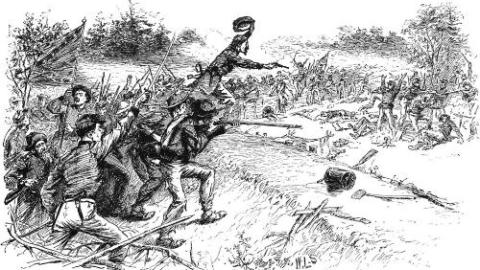How the Moon Changed the Course of the Civil War

Stonewall Jackson, the legendary Confederate commander, was killed by friendly fire at the moment of his greatest triumph. As darkness set in following Jackson’s flanking attack on the Union Army at the Battle of Chancellorsville, a North Carolina regiment mistook the general for the enemy, calling out “It’s a damned Yankee trick! Fire!”
Eight days later when Jackson succumbed to pneumonia, Robert E. Lee lost not only an invaluable military asset; it was also a significant blow to Southern morale.
Ever since then, historians have been trying to figure out how such a monumental mistake could have been made. Two astronomers have now made a convincing case that the position of the moon was to blame. Using battle maps and astronomical software, astronomers Don Olson and Laurie E. Jasinski plotted exactly where Jackson and the North Carolina troops were at 9pm on May 2, 1863.
“Stonewall Jackson would have been seen as a dark silhouette, from the point of view of the 18th North Carolina regiment,” Olson said.
The astronomers have published their findings in the current issue of Sky & Telescope magazine.
Of course, the moon has played a significant role in many other historical events, from the fall of Athens to Columbus’s subjugation of the Jamaican natives.





